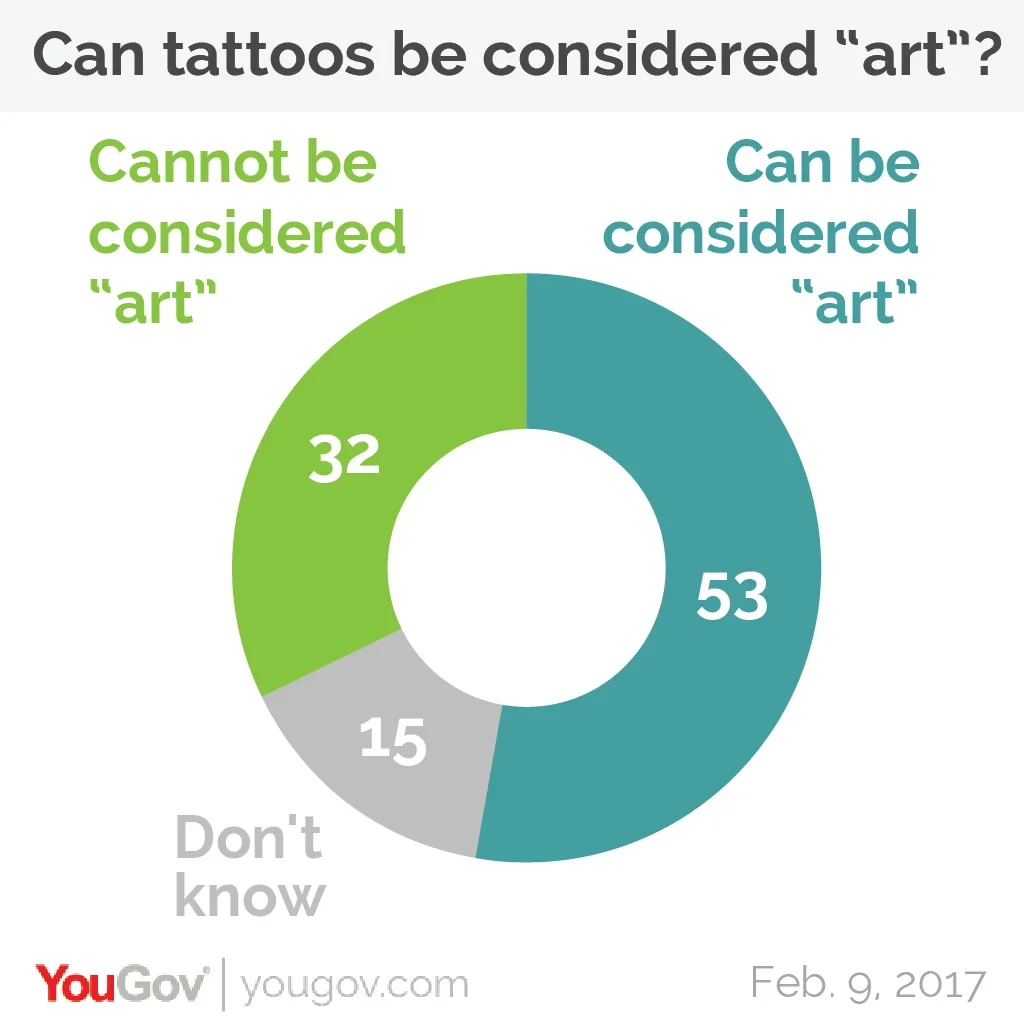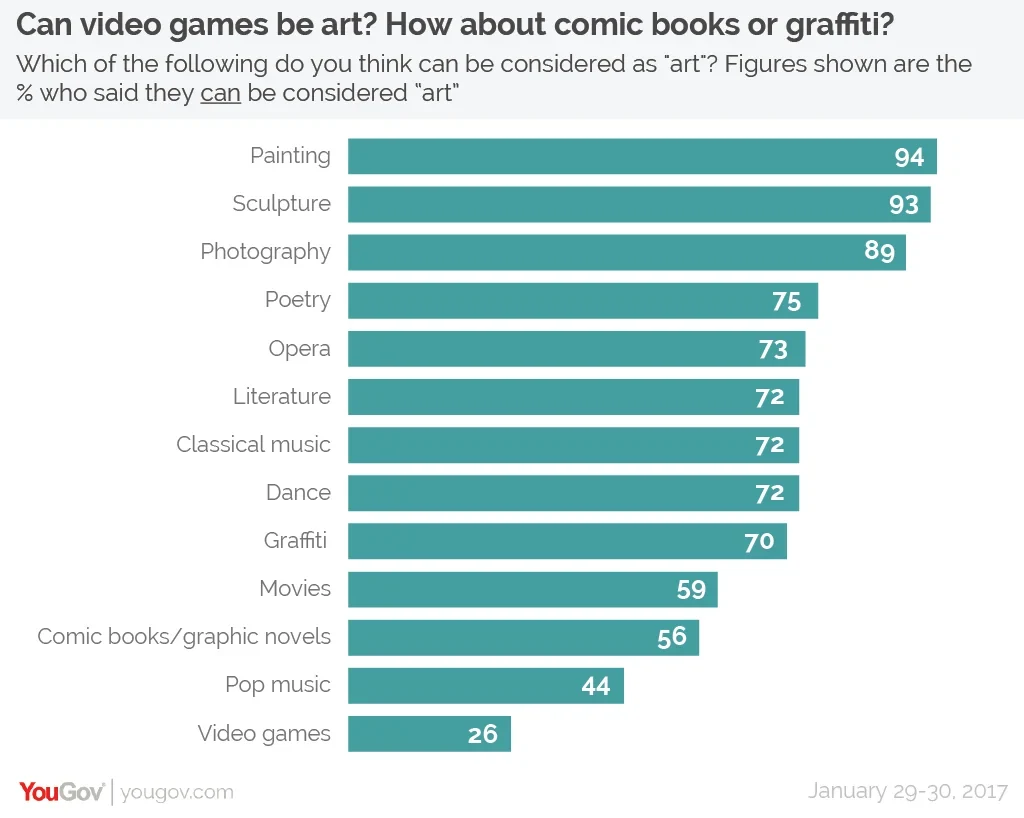Can video games be art? How about comic books or graffiti? YouGov's new survey explores the public's attitude to what can and can not be considered art
A man named Tim Stein made the news this week after it was revealed that he had arranged to sell the tattooed skin on his back to a German art collector to be framed after his death.
Up until that point, Steiner’s contract also states that he must exhibit the tattoo by sitting topless in a gallery at least three times a year.

Whilst most British people probably don’t fancy having framed skin on their wall at home, they do seem to agree with the German art collector that tattoos are an art form. New YouGov research conducted yesterday finds that the majority of people (53%) think that tattoos can be considered art, whilst 32% say they cannot be considered art.
In a separate survey a couple of weeks earlier, YouGov asked the public whether they considered a range of different mediums to be “art”.
Almost all of the mediums we surveyed were accepted as art by the majority of people. Whilst the most traditional mediums like painting and sculpture were considered to be art by the overwhelming majority (94% and 93% respectively), the public has clearly embraced some far less conventional art forms.
For instance, graffiti is considered to be art by 70% of Brits, whilst 56% of people also believe comic books and graphic novels to be art.

Many people also believe that music can be a form of art – but the public draws a distinction between classic and contemporary music. Whilst 72% of people believe that classical music can be considered art, this figure drops to 44% for pop music.
Video games might be the most unusual addition to this list, but New York’s Museum of Modern Art (or MOMA) certainly considers them to be art, having exhibited 14 games in their gallery in 2013, including classics such as Pac-Man and Tetris.
Nevertheless just 26% of Brits felt that video games can be art. It would seem likely that this figure will increase as time goes by, however, as the youngest Brits – 18-24 year olds – were far more likely to think that video games can be art, at 47%.
Age was a key factor in whether people accepted some of the mediums as art or not. Older age groups were significantly less likely than their younger peers to think that comics/graphic novels, video games, graffiti, movies and pop music are art. There was a much greater consensus between age groups on more conventional art forms.
Social class also seems to play a role in artistic perception. Across almost all art forms, middle class people (those in the ABC1 social groups) were more likely to consider a medium to be “art” than working class people (those in the C2DE groups).
Photo: iStockphoto










